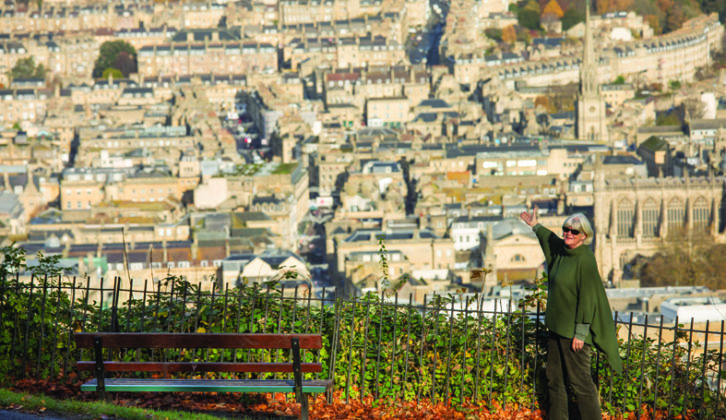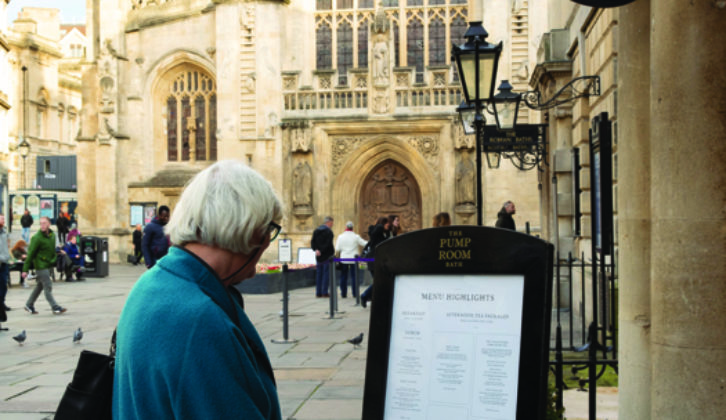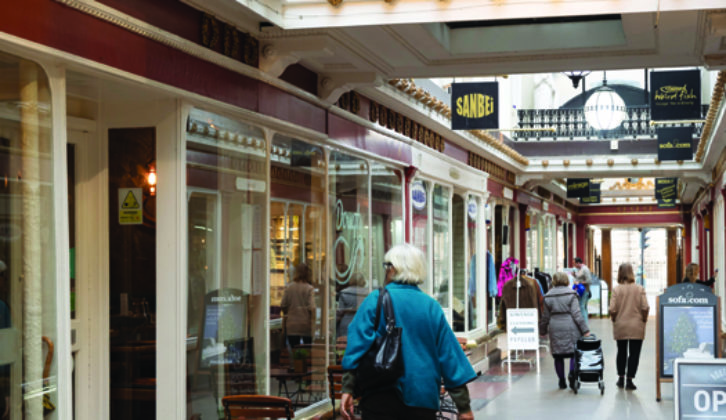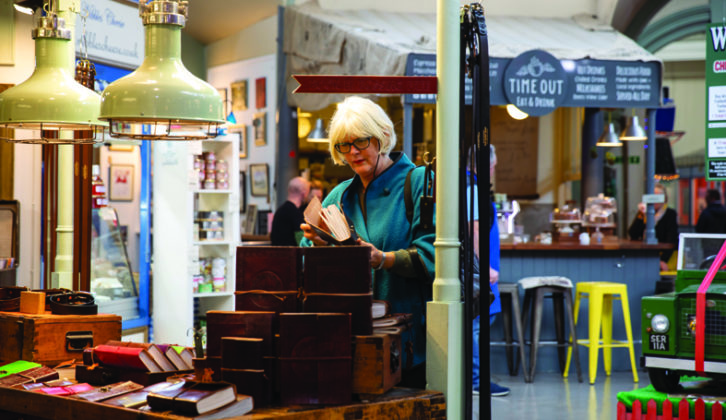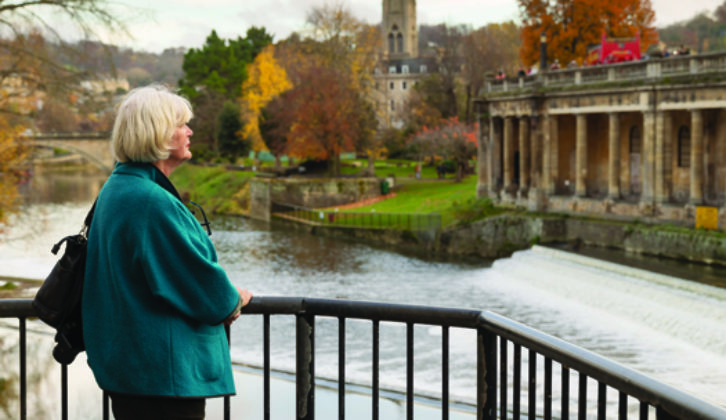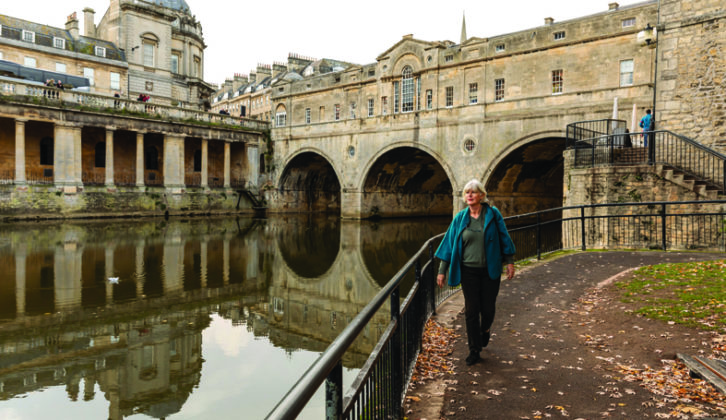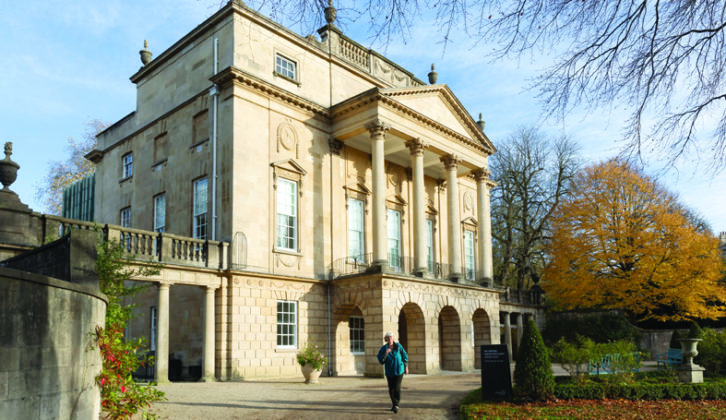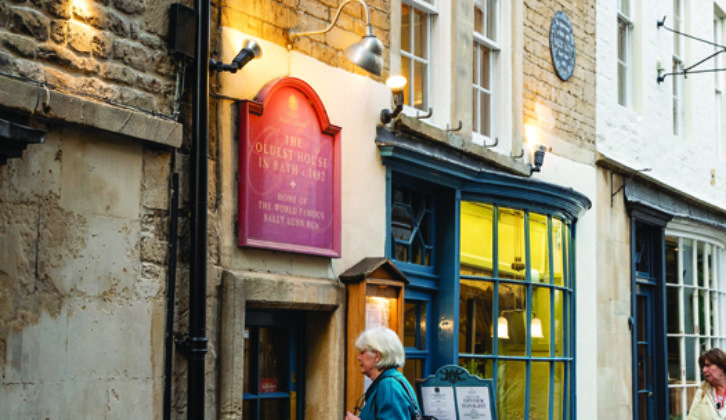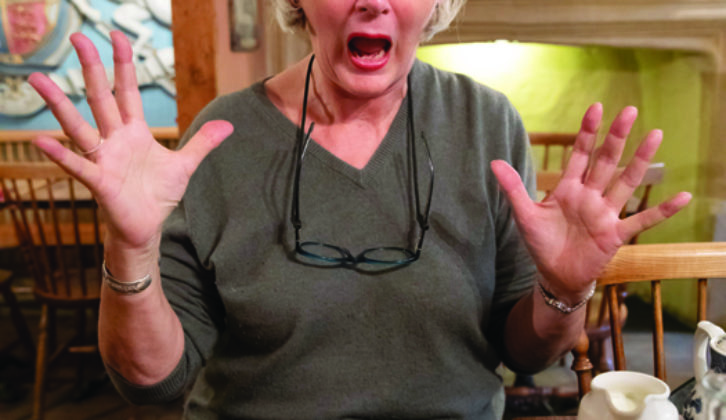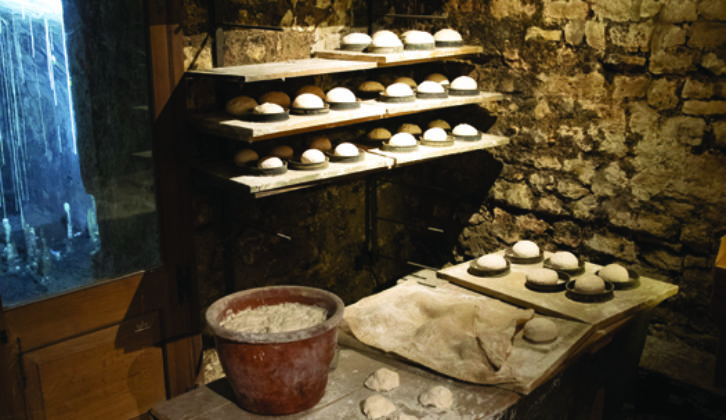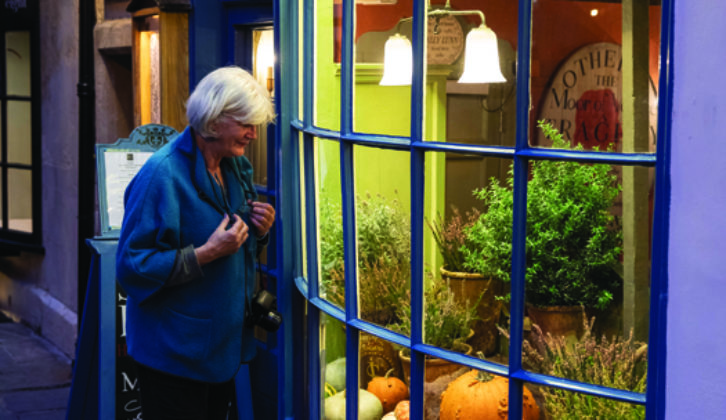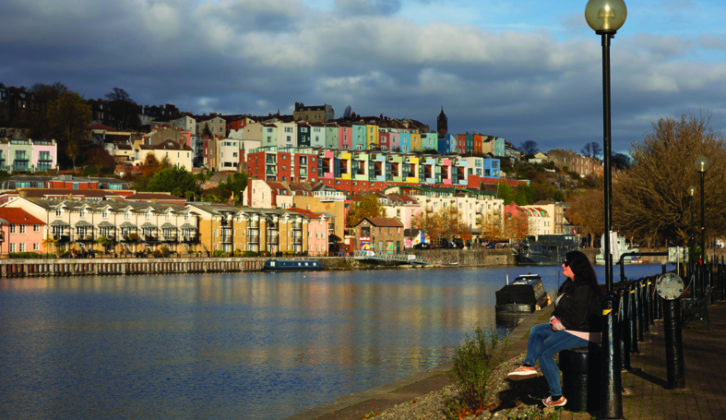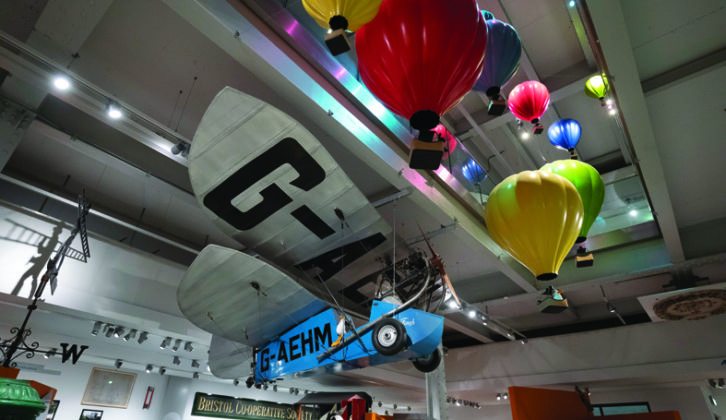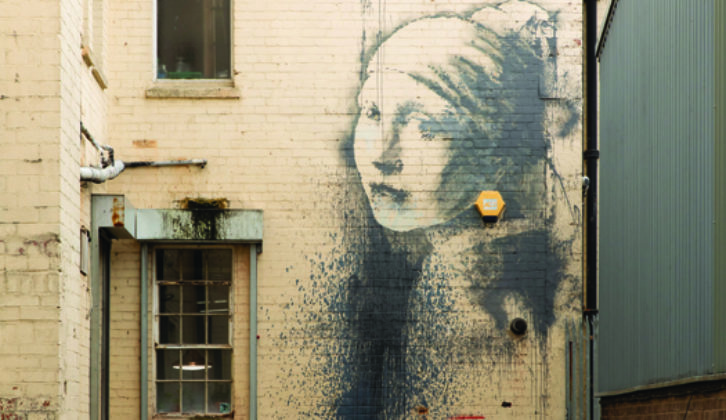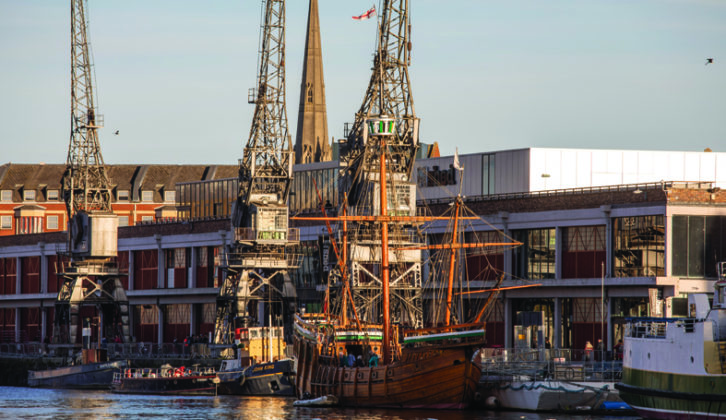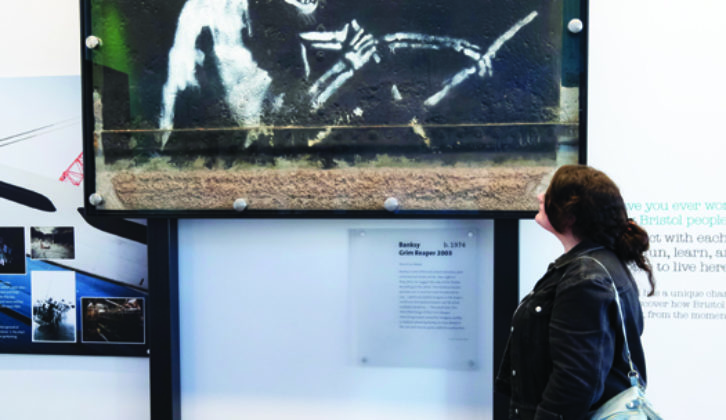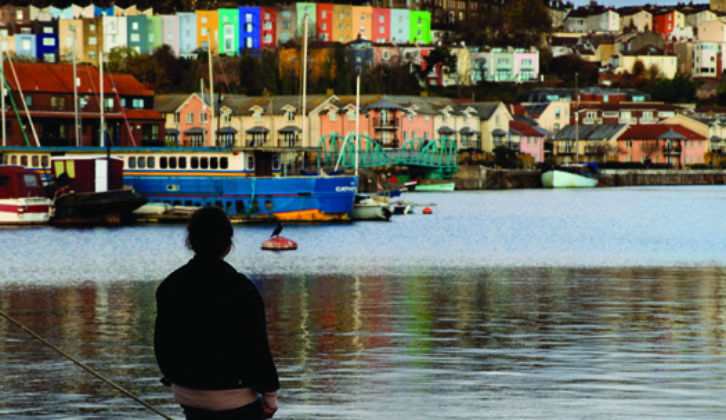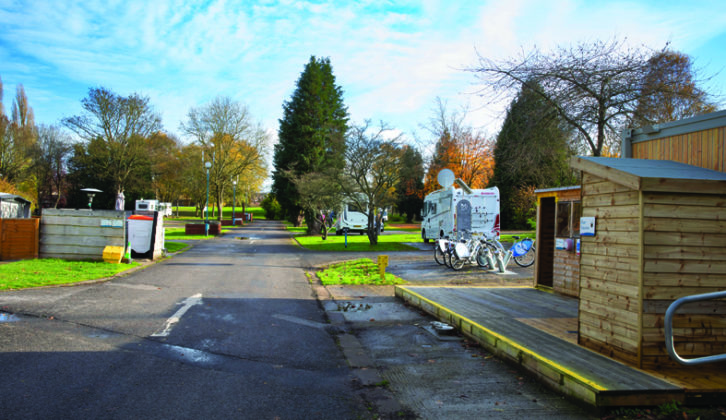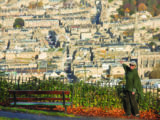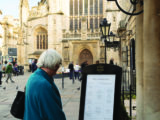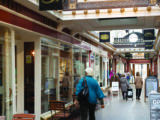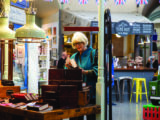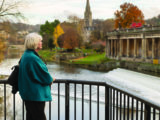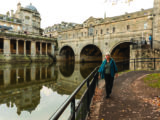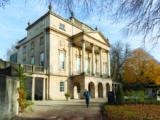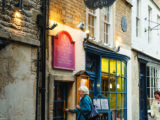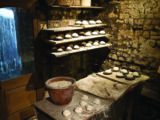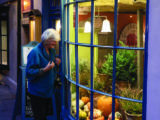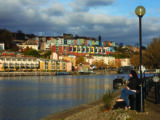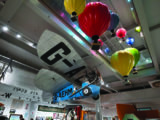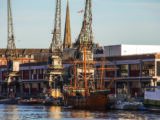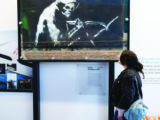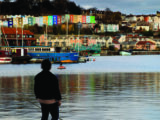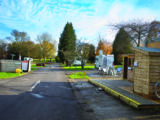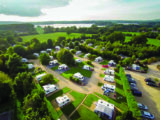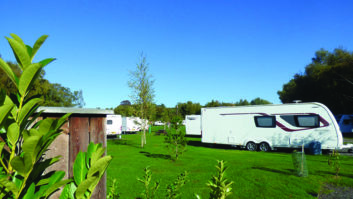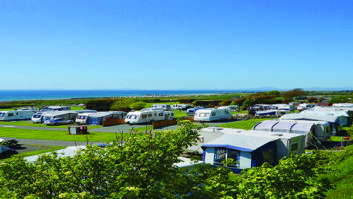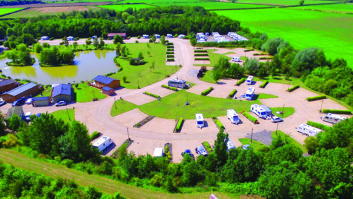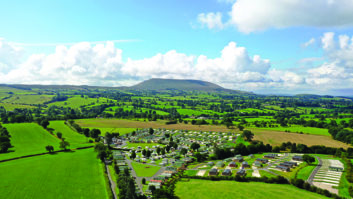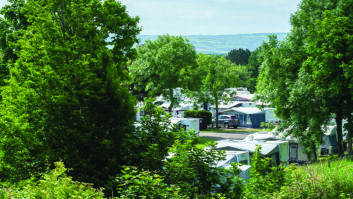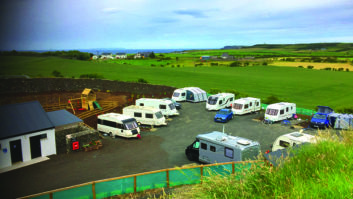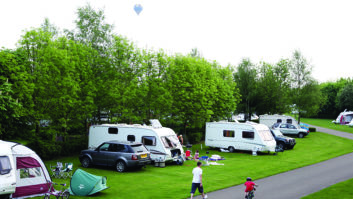Bath and Bristol lie just 13 miles apart on the River Avon, although it will take you around 50 minutes to drive between the two. The spa city of Bath is set in a hollow at the southern end of the Cotswolds Area of Outstanding Natural Beauty, while Bristol developed as a port at the confluence of the rivers Avon and Frome, eight miles inland from the Bristol Channel. Extreme tides in the Bristol Channel allowed the navigation of large ships into its harbour. Both cities have water very much at their heart, for quite different reasons.
When editor Sarah suggested a (pre-lockdown) tour to see which had the most to offer, I jumped at the chance to return to Bath. Bryony, meanwhile put her name down for Bristol.
Healing hot springs
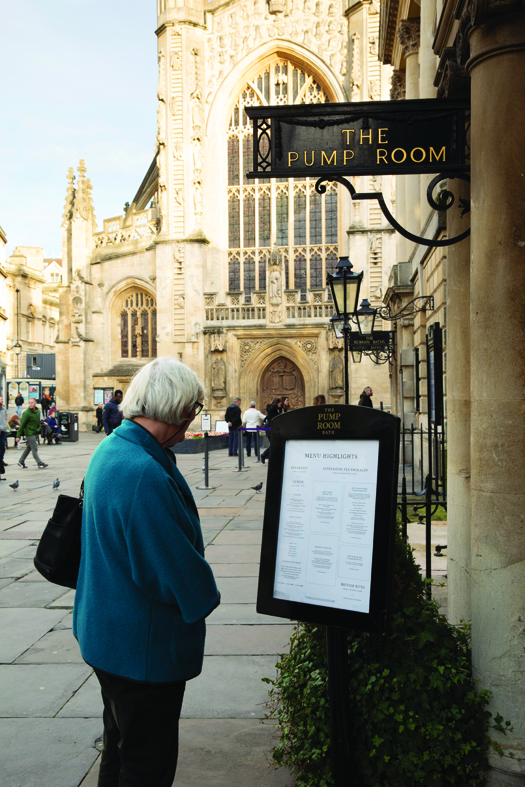
Bath is by far the older of the two; legend has it that it was founded in 860 BC, when Prince Bladud, father of King Lear and stricken by leprosy, followed the example of some diseased pigs and covered his skin in the mud from a hot spring (as you do).
Miraculously, he and the pigs were cured of their ailments, marking the beginning of centuries of exploitation of the hot springs’ healing qualities.
In the first century AD, the Romans built a temple here, dedicated to the Celtic god of Sul (to appease the Britons) and the Roman goddess Minerva. Public baths were added, and a town, known as Aquae Sulis, grew up around the temple. The Saxons occupied it during the sixth century, Alfred the Great fortified it in the ninth, and in the 10th, Edgar, first king of England, was crowned here.
It gained an abbey in the 12th century, which was remodelled in the 16th. All the while, people continued to visit, to heal their ailments in the hot springs.
A golden crescent
It was during the reigns of four Georges that the golden city of Bath acquired its current good looks, which it owes in the main to three men: architects John Wood the Elder and the Younger, and entrepreneur and philanthropist Ralph Allen. I learnt more about the latter at No 1 Royal Crescent.
This famous sweep of 30 grand houses – its Palladian-style facade was built between 1767 and 1774 in the shape of the crescent moon – was designed by John Wood the Younger, and built in Bath stone obtained from quarries owned by Ralph Allen.
No 1 is now a museum of Georgian life in a city celebrated as the place in which to see and be seen. And, in keeping with the best Georgian households, a footman greets you at the door. Houses in the Crescent were leased for the season and the address was important in terms of social status.
No 1 was rented for 20 years by Henry Sanford, a retired Irish MP with land in Ireland, and it is his occupation of the house that is depicted. An introductory video gives you a flavour of life at the time. The guides in each room explain how they would have been used – all very elegant on the surface, but there was of course no electricity then, neither were there bathrooms.
As one guide said, if you look at the backs of many of the grander houses in Bath, they have a box-like extension where a bathroom has been added. Those in the Royal Crescent were constructed by different builders, so the facade is unified, but the backs are not.
No 1’s occupants received guests in the withdrawing room on the first floor. With the kitchen in the basement, that meant a lot of running up and down stairs for the servants when the master called for tea.
Honey-coloured stone
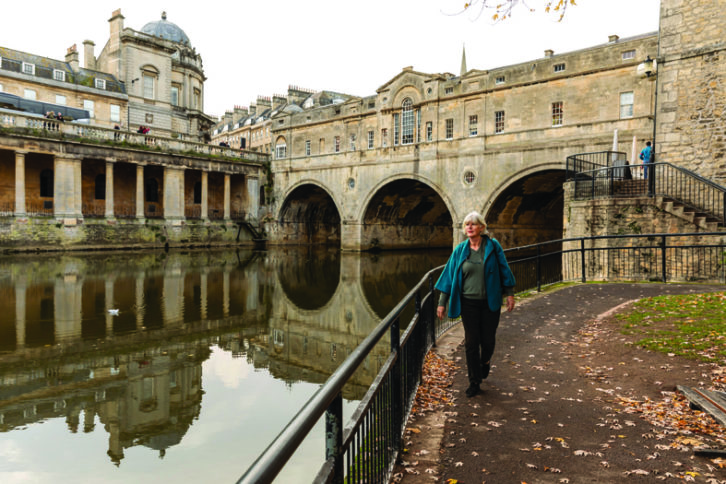
Ralph Allen’s part in the improved look of Bath began with his meteoric rise from postboy to postmaster for Bath by the tender age of 19.
An industrious and ambitious man, Allen reorganised the postal system and eventually became mayor of Bath. He also accumulated a fortune and bought several local quarries, supplying builders with the honey-coloured limestone for which Bath is famous.
Allen collaborated with John Wood the Elder in the building of his house, Prior Park. It was Wood the Elder who built the magnificent Queen Square and planned the Palladian-style Circus, which was completed by his son. Past occupants of The Circus include politician William Pitt the Elder, artist Thomas Gainsborough and George Spencer, 4th Duke of Marlborough.
The Royal Crescent and The Circus are said to represent the sun and the moon, and the stunning architecture in Bath helped to earn it UNESCO World Heritage Status.
Sun, moon and stars
A 15-minute walk away, in New King Street, you will find the Herschel Museum of Astronomy. This fascinating museum was home to William and Caroline Herschel, the brother and sister astronomers whose work doubled the size of the known solar system in the 18th century.
William worked in Bath as a musician and composer, but his interest in the night sky led him to build telescopes; through these he discovered the planet Uranus from the garden at 19 New King Street. This won him fame throughout Europe and he was offered the position of Court Astronomer by George III. Caroline discovered several comets and also became a highly regarded astronomer.
Your visit begins in the basement, where a video, narrated by Sir Patrick Moore, tells the Herschels’ story. Also in the basement are the kitchen and William’s workshop, where he ground lenses and turned wood to make his telescopes. On the floors above are facsimiles of Herschel’s telescopes and the brass orrery (a model of the solar system) that he used to demonstrate his teachings.
Just down from the Herschel Museum is the Green Park Brasserie, housed in a handsome former railway station and ideal for a coffee break. The concourse behind it hosts a farmers’ market on Saturdays.
Fashionable city
Bath has been a city of fashion for centuries, and that is reflected in the fantastic Fashion Museum in the Assembly Rooms, which holds almost 100,000 items.
Fashion is also evident in Bath’s centre, where Roman and Georgian architecture mix with brightly lit retail windows. After browsing the shops, and a stop to watch fudge being made, it was time to retrieve the car from the Charlotte Street car park. I wanted a view of the city from high up before the day drew to a close.
Alexandra Park in Bathwick, on the other side of the Avon, is a wonderful green space high on Beechen Cliff, and can be accessed from Wells Road and Shakespeare Avenue. It’s free to park, gives great views over the city and is lovely for walking.
It was only 3.5 miles to Bath Marina & Caravan Park, where I dropped off the car before heading to The Boathouse for supper. You can reach this pleasant pub via the towpath from the marina, but take a torch: it can be a little dark and slippery in winter.
Newbridge Park & Ride is opposite The Boathouse and that, I decided, was the most sensible way to continue my exploration. The following morning, I caught the 21 bus into Bath, which dropped me off at Westgate Buildings. The Holburne Museum, on the other side of the Avon, was on the agenda.
En route, I passed through the Guildhall Market, where you can buy almost anything, and continued across Pulteney Bridge.
Prosperous bridge
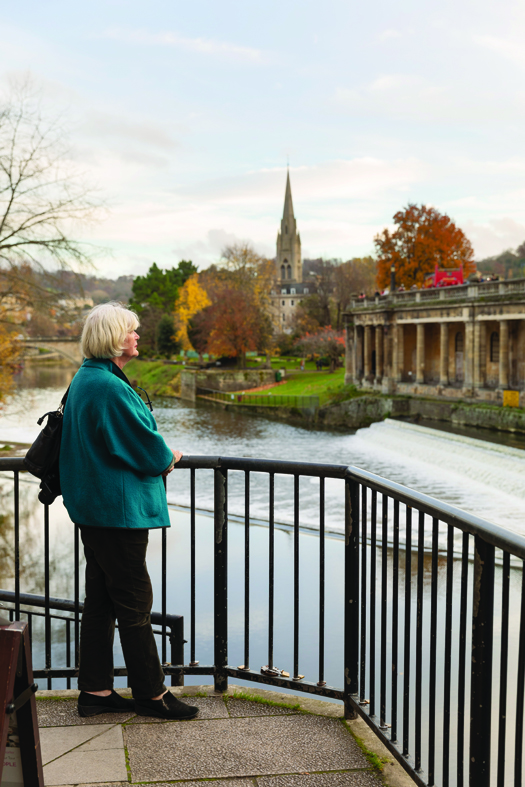
Constructed in the latter half of the 18th century, this is the youngest of four bridges in the world that have shops on both sides. Designed by Robert Adam, the bridge was commissioned by William Pulteney, who had land on the other side of the river and wanted to build a town to rival Bath.
It’s a 10-minute walk from the bridge to the Holburne Museum, built at the end of the 18th century. The museum was formerly a hotel with access to Sydney Gardens, one of the few remaining 18th-century pleasure gardens – a place Jane Austen, who lived at No 4 Sydney Place, would have known.
At public breakfasts held then, tea coffee and Sally Lunn buns would be followed by dancing – clearly a different era! Today, a modern café in the museum’s glass extension has access to the gardens.
Penchant for art
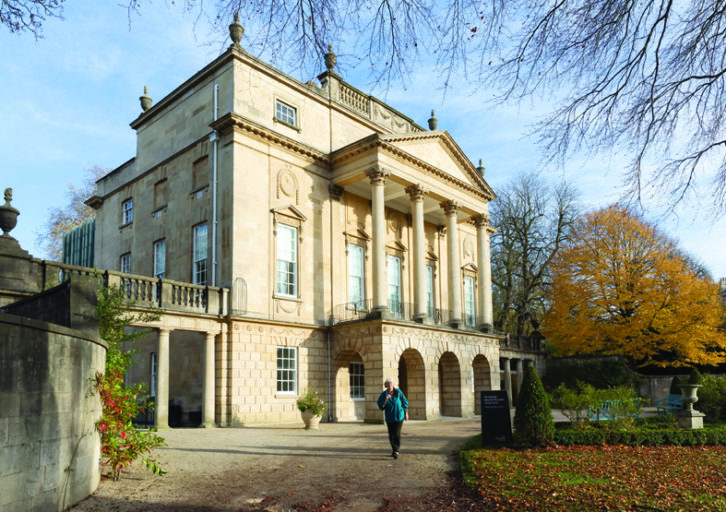
This fine building has been a public museum for 125 years, beginning with a bequest of 17th- and 18th-century ceramics, glass and silver collected by William Holburne, a naval officer with a penchant for art. The original collection has been added to over the years.
Now it really was time for a cuppa, and I was a bit hungry, too. I decided to seek out the original bakehouse of that famous Bath delicacy, Sally Lunn buns.
I headed back across Pulteney Bridge, past the Roman Baths – an absolute must-see if you have never been to Bath – and the city’s magnificent Abbey, with its ladder of angels and fan-vaulted ceiling.
Then it was past the delightful Abbey Green, with its cafés and ancient plane tree, and down an alley once known as Lilliput Alley, now named North Parade Passage.
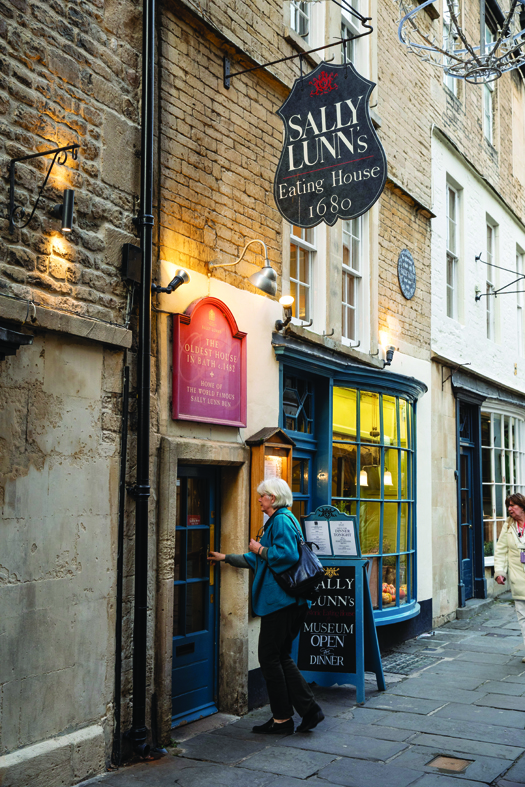
Sally Lunn’s house purports to be the oldest in Bath, and it certainly seems very ancient as you pass through the low front door. A museum in the basement depicts Solange Luyon (Sally Lunn), a Huguenot refugee from France, at work in front of an oven, baking those famous buns.
I settled down for a Sally Lunn cream tea, noting that the menu stipulated only half a bun would be served unless a whole bun was requested. And when my order arrived, I understood why!
The half-bun was enormous, but it was incredibly light – rather similar to a brioche and the perfect foil for clotted cream and strawberry jam. The recipe is apparently secret and only passed on with the house.
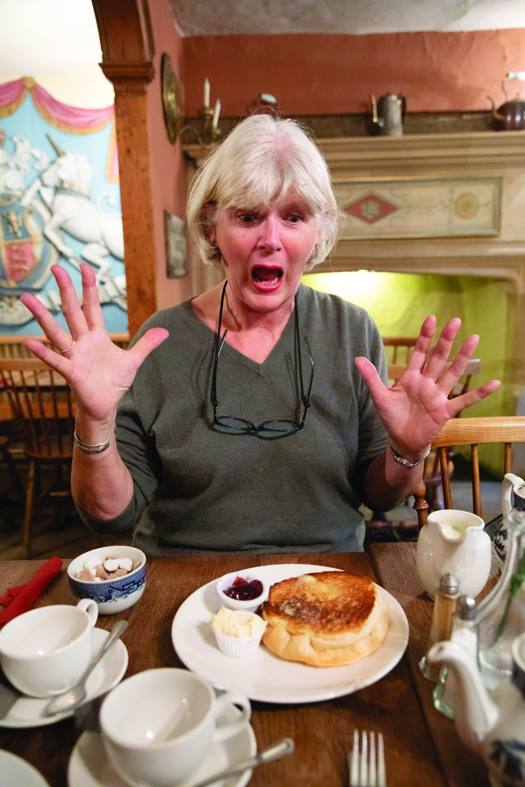
Heading for home
With the cream tea despatched, I had to get back to Westgate Buildings to catch the bus to the site. There was still so much of Bath to explore, but I wanted to save that for another visit – not that I needed an excuse to return to this beautiful city.
I ate dinner in the van and readied it for an early start in the morning, when I would be driving to Bristol to hand over to Bryony,
Bristol
(written by Bryony Symes)
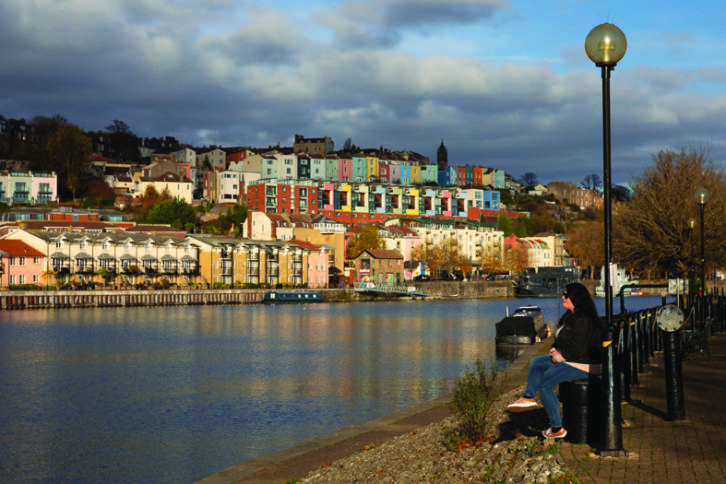
These two fine cities have much in common: both centre on the River Avon and have been important settlements since Roman times and beyond. Yet they are also very different. While Bath is all Georgian elegance – as Claudia discovered – Bristol is more gritty, but with no less illustrious a history. I was keen to discover more of its industrial heritage and its longstanding attractions for freethinkers and activitsts.
The Baltic Wharf Caravan and Motorhome Club Site was fully booked, so I decided to pitch the Bailey at Bath Chew Valley Caravan Park, which has a good bus service to Bristol.
Powered by people
This city was built on a convergence of two rivers, the Avon and the Frome. Waterways are at its heart, and as I started to explore, I passed Narrow Quay – home of renowned arts venue Arnolfini – on my way to see the Wapping Wharf area of Spike Island, the heart of Bristol’s harbour. Here you’ll find M Shed, a disused 1950s transit shed that has been transformed into a free museum, all about Bristol and its people.
Here I learnt about all sorts of fascinating characters, such as George Pocock, who designed kite-powered carriages, and Harry Dolman, who used a ‘Flying Flea’ kit to build his own aeroplane. They also have a work by Banksy, Bristol’s famous street artist. ‘Grim Reaper’, originally appeared on the side of the Thekla, a former cargo ship.
Ships in the harbour
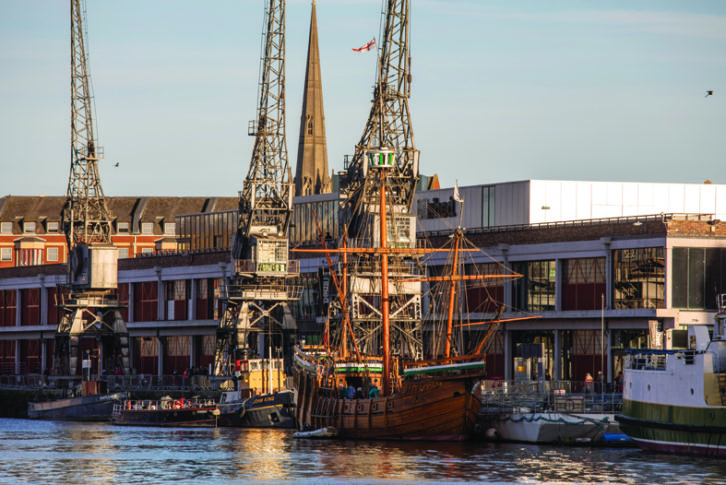
Docked just outside M Shed is The Matthew, a replica of the caravan sailed by explorer John Cabot when he reached Newfoundland in 1497. As I walked the deck, it struck me just how small the ship is.
Following the tracks of Bristol Harbour Railway, I found the shops and restaurants of Wapping Wharf. This area is now home to many businesses, some housed in former shipping containers.
The harbourside walk carries on around Spike Island, where I come to one of Bristol’s icons, SS Great Britain. There’s a ferry stop here, so you can hop on a boat if you don’t feel up to walking from the city centre.
Designed by Isambard Kingdom Brunel, she was the longest passenger ship in the world. the first to combine an iron hull and a screw propeller, and the first steamship to cross the Atlantic. Chalking up 90 years of service as a passenger and a cargo ship, she is now a national treasure and remarkably well conserved. You can experience some of the sights, sounds and smells of those early crossings, and compare the cramped, noisy steerage to the luxury of first-class.
Soon I was back on the harbour, where the walk takes you away from the waterside to see more of the city’s street art, including Banksy’s ‘Girl with a Pierced Eardrum’.
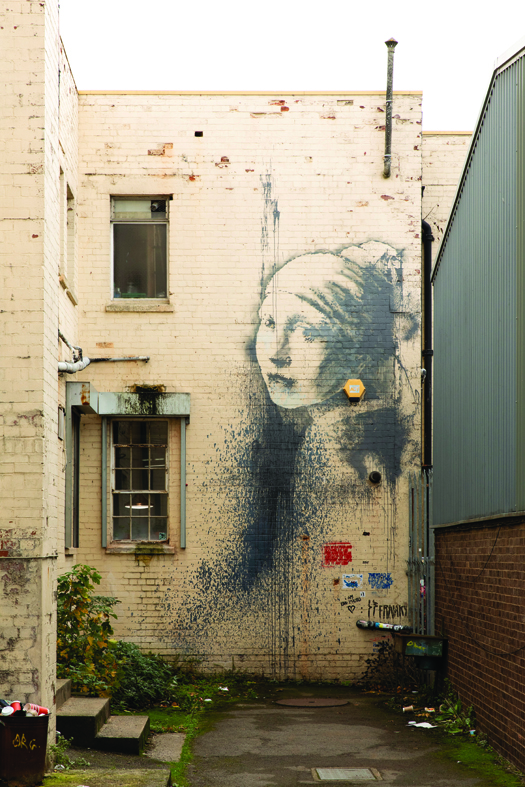
Banksy is not the city’s only street artist, by any means – Stokes Croft is a veritable outdoor gallery. This is where I began next day, wandering from street to street to see what I might find. I also discovered eateries, vintage stores and more along Gloucester Road, then stopped for breakfast at The Canteen, in Hamilton House, at the centre of this creative community.
Art, nature and history
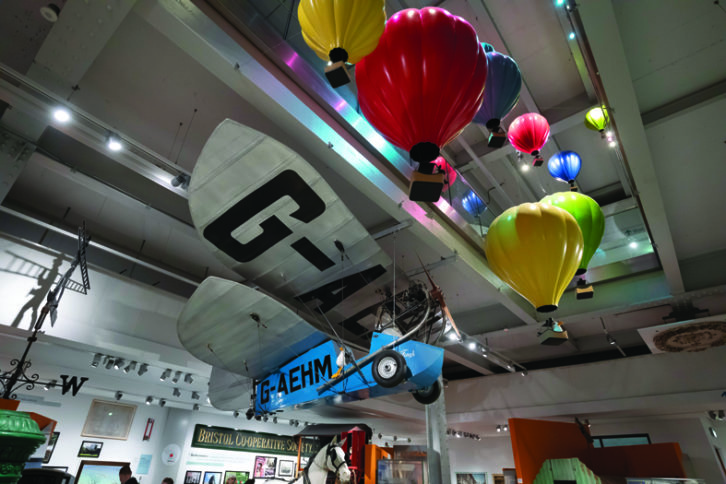
If you prefer to explore the city’s more traditional attractions, don’t miss Bristol Museum & Art Gallery, which is free to visit and has fine collections of art, nature and history. When I visited, the museum was hosting a special exhibition of prints by Japanese masters Hokusaid and Hiroshige – very fitting after I’d seen the Stokes Croft wave mural, by Phlegm and other artists, which locals call ‘Tsunami’. Just opposite, I saw one of my favourite pieces, a fine tabby cat by Gloucester artist Beastie.
I walked on, past the very grand Wills Memorial Building Tower and across to Brandon Hill. The walk to Cabot Tower is steep, then there’s the spiral staircase inside the 105ft tower to climb, but if you do make it to the top, the views are breathtaking.
I could pick out the harbour attractions that I’d visited earlier and spot more huge murals. It’s the closest thing to a bird’s eye view of Bristol that you can get, and well worth the admittedly hard slog.
Taking it slowly for the rest of the day, I wandered back down the hill to Bristol Cathedral, a religious site for more than 1000 years. You can still see the impressive gatehouse to the Abbey of St Augustine.
Back to the present day, just south of the cathedral is Millennium Square, where you’ll find the Aquarium, a science centre and plenty of bars and restaurants.
Trading hub

The city centre is a mix of newer buildings around historic streets, such as Christmas Steps and the lanes around St Nicholas Market. The latter is a covered market of craft, gift and food stalls housed in the Corn Exchange, Bristol’s trading hub since 1743. After another day of exploring, it was time to get back on the bus to the campsite.
For my final day in Bristol, I decided to drive into the city and park up in Brunel Lock Road. I headed first for The Create Centre, an environmental centre with an Ecohome that you can explore.
Then it was off to Underfall Yard, the historic boatyard on Spike Island, where I stopped to buy a delicious bacon roll from Pickle, the visitor centre café before setting off up the steep hillside on the other side of the Cumberland Basin, to Clifton.
Above it all
Known locally as Clifton Village, the main streets here house a selection of welcoming pubs, cafes, eateries and independent shops.
This includes Clifton Arcade, which has gone by many names over the years. Opened in 1879 by Joseph King, it was an initial failure and became known as ‘King’s Folly’. But it is far from that now, despite the building coming close to collapse in the 1990s. Today, it is bustling with people and thriving businesses.
After browsing through the shops in the village, I carried on up the hill to the Downs, where you can find the most spectacular views of Clifton Suspension Bridge. The Downs’ 442 acres are a haven for wildlife and home to several Bristol landmarks.
Observatory Crest
Just above the bridge, Clifton Observatory stands in the centre of an Iron Age hill fort, ringed by earthworks. Originally a mill, the building burnt down in 1777, after which the ruin was transformed into an observatory by William West, a local artist and pioneer in photography. He installed a camera obscura, which you can still see today. That isn’t the only thing to admire here, though. Delve deeper, via a cruise staircase in the rock, and you eventually emerge into Ghyston’s Cave, teetering on the side of the Avon Gorge. According to legend, this was once home to a giant, one of two said to have roamed this area.
More recently (and more credibly), the cave was part of a small chapel in 305 AD and has had various religious affiliations since. Now, though, as well as being home to nesting pigeons, this is a great look-out spot for a more unusual view of the Gorge and Clifton Suspension Bridge.
Over the bridge
It’s a rather tiring climb back from the cave, but emerging onto the Downs, there was one final attraction that I wanted to see, and it was a big one. I have long wanted to visit Clifton Suspension Bridge.
Not only is it a spectacular sight, it’s also a work of engineering genius, and another example of Isambard Kingdom Brunel’s achievements. The inscription, Suspense vix via fit (‘A suspended way made with difficulty’), is certainly fitting for the bridge’s Leigh Woods Tower.
Building the bridge was a long and convoluted journey to completion, which started in 1754 when money was bequeathed for a toll-free bridge across the Avon Gorge. A public competition in 1829 for suspension bridge designs came up with nothing viable, but a second competition saw the then 23-year-old Brunel appointed as project engineer.
Sadly, he never saw what he referred to as “my love, my darling” coming to fruition – work on the bridge wasn’t completed until 1864, five years after Brunel died.
The awe-inspiring statistics for this most imposing structure speak for themselves: a span across the gorge of 702ft, the body of the bridge sitting at 245ft above the River Avon, supported by chains recycled from London’s Hungerford Suspension Bridge – it is all really impressive.
One of the most fascinating things that I learned by taking a stroll around the very informative visitor centre is that the Leigh Woods Abutment contains a whole series of cavernous chambers, which form part of the complicated support structure of the suspension bridge.
What’s even more amazing is that this wasn’t discovered until 2002. Unfortunately, I visited too late in the year to join one of the hard-hat tours of the abutments (these normally run from Easter to October).
Icons of creativity
Walking back across the beautiful bridge, I could certainly feel the slight sway of the structure – one final nudge to remind me about the incredible work that went into making this iconic landmark, which is now a world-famous symbol of Bristol.
This is definitely a city that was, and still is, made by its people: ambitious, creative, entrepreneurial individuals whose ideas and drive have shaped its past and continue to innovate for its future.
TRIP PLANNER
Way to go
Travelling from Surrey, we took the M3, A303 and A36 to Bath. The A36 and A4 connect Bath and Bristol.
When to go
We went in late autumn (pre-lockdown), which proved a good time of year to visit. Bath was still busy with tourists, but less packed than it might have been in the summer months or at Easter.
Food and drink – Bath
The Boathouse
- Newbridge Road, BA1 3NB
- 01225 482 584
- www.boathouse-bath.co.uk
- Comfortable eating place overlooking the River Avon
Green Park Brasserie
- 6 Green Park Station, BA1 1JB
- 01225 338 565
- www.greenparkbrasserie.com
- Good food and live music in a former railway station hall
The Royal Pavilion Café
- Victoria Park, BA1 2NR
- 01225 448 860
- Simple café food
Food and drink – Bristol
Harbourside Kitchen
- Gas Ferry Road, BS1 6TY
- www.ssgreatbritain.org
- Superb views of SS Great Britain and the harbour while you dine
Pickle at Underfall Yard
- Cumberland Road, BS1 6XG
- 0117 925 0816
- Great sandwiches and really excellent coffee
The Somerset House
- 11 Princess Victoria Street
- BS8 4BX
- 0117 973 6647
- Seasonal local produce
Where we stayed
Bath Marina and Caravan Park
- Brassmill Lane, Bath, BA1 3JT
- 01225 424 301
- bathcaravanpark.com
- Open All year Pitches 88 Charges Visit Website for latest information
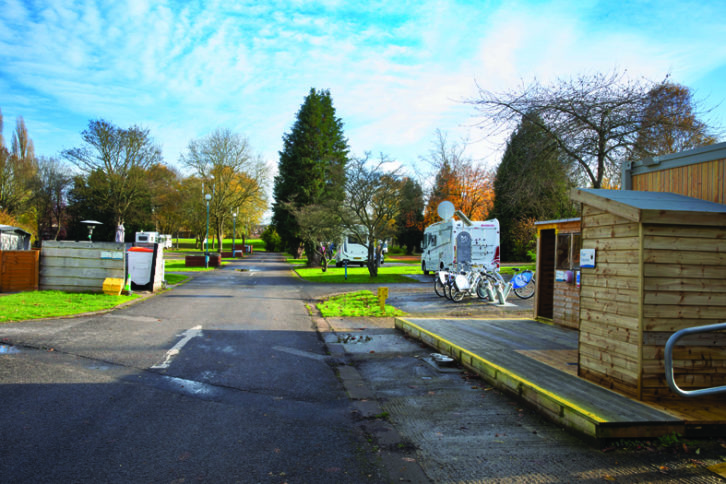
This is a very popular site for tourers, an excellent base for exploring by bike or on foot. Take advantage of the Park & Ride just across the road to get into the city. You can also catch buses to Bristol from outside the site. Facilities include toilets, showers, a launderette and chemical disposal points. All pitches are hardstanding, with 16A hook-up.
Bath Chew Valley Caravan Park
- Ham Lane, Bishop Sutton, BS39 5TZ
- 01275 332 127
- bathchewvalley.co.uk
- Open All year Pitches 45 Charges £25-£36 (pitch+2+hook-up)

Bath Chew Valley, previously a Regional Winner in our Top 100 Sites Guide, is located halfway between Bath and Bristol, with excellent public transport links close by.
A return bus ticket to Bristol costs a few pounds, and there are services at ideal times for spending a day in the city. The site itself is immaculate.
If you liked this… READ THESE:
Six reasons for a great British staycation
10 Top Sites for World Heritage
If you’ve enjoyed reading this article, why not get the latest news, reviews and features delivered direct to your door or inbox every month. Take advantage of our brilliant Practical Caravan magazine SUBSCRIBERS’ OFFER and SIGN UP TO OUR NEWSLETTER for regular weekly updates on all things caravan related.
I was keen to discover more of its great industrial heritage and its longstanding attraction for freethinkers and activists
